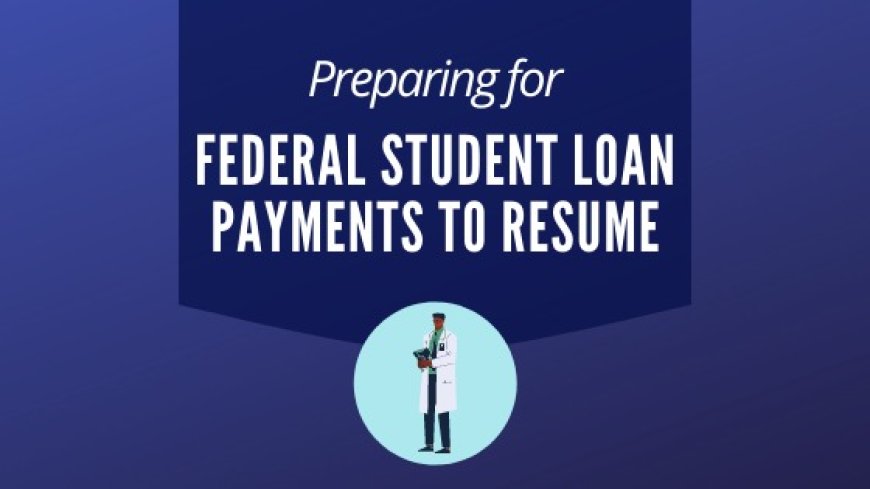What You Need to Know About Resuming Federal Student Loan Payments?
Get ready for the restart of federal student loan payments. Learn about options, income-driven plans, and cost-saving strategies. Ensure a smooth transition.

After a hiatus of over three years due to the pandemic, federal student loan borrowers are set to resume payments this month. Here's a comprehensive guide on what steps to take:
Getting Started
With the pandemic-related pause on federal student loan payments coming to an end, borrowers need to prepare for the resumption of payments. A bill outlining the monthly payment amount should be expected at least 21 days before the due date. While most borrowers have likely received this bill, if you haven't, be sure to visit your loan servicer account. Interest started accruing again in September.
For those who haven't made a student loan payment in the last three years, there's no need to panic. Here's what experts recommend:
The first step is to log in to your StudentAid.gov account and verify who your loan servicer is. Many loan servicers changed during the pandemic, so you may have a different one than you did in March 2020, according to Amy Czulada, outreach and advocacy manager at the Student Borrower Protection Center.
Once you identify your loan servicer, log in to your account to access your student loan balance, monthly payment amount, and interest rate. Czulada also suggests checking which type of student loan you have, as this will determine which income-driven repayment plans you may qualify for.
Lastly, ensure your personal information in your account with your loan servicer is up to date to receive all important correspondence.
Determining Your Payments
Borrowers can find out their monthly student loan payment by accessing their account with their loan servicer. If you're unsure who your servicer is, you can find out by logging in to your studentaid.gov account.
Managing High Payments
If you anticipate difficulty in making payments when they resume, you have several options.
President Joe Biden announced a 12-month grace period this summer to assist borrowers struggling after payments restart. While making payments during the first 12 months after they resume is advisable, not doing so won't risk default or harm your credit score. Interest will still accrue whether you make payments or not.
Betsy Mayotte, president of The Institute of Student Loan Advisors, suggests researching if you qualify for an income-driven repayment plan. Borrowers can use the loan simulator tool at StudentAid.gov or the one on TISLA’s website to find a payment plan that best fits their needs. The calculators provide your monthly payment under each available plan and your long-term costs.
Understanding Income-Driven Repayment Plans
An income-driven repayment plan sets your monthly student loan payment at an amount intended to be affordable based on your income and family size. It considers various expenses in your budget, and most federal student loans are eligible for at least one of these types of plans.
Typically, your payment amount under an income-driven repayment plan is a percentage of your discretionary income. If your income is low enough, your payment could be $0 per month.
Last year, the Biden administration introduced a new income-driven repayment plan. The SAVE plan offers some of the most lenient terms ever. Under this plan, interest won’t accumulate as long as borrowers make regular payments.
There's still potential for legal challenges to the SAVE plan, similar to the one that led the Supreme Court to reject Biden’s proposal for mass student loan cancellation.
Additional Programs to Assist With Student Loan Debt
For those who've worked for a government agency or a nonprofit, the Public Service Loan Forgiveness program offers cancellation after 10 years of regular payments. Additionally, some income-driven repayment plans cancel the remaining debt after 20 to 25 years.
Borrowers should ensure they're enrolled in the most suitable income-driven repayment plan to qualify for these programs.
Borrowers who have been defrauded by for-profit colleges may also apply for borrower defense and receive relief.
If you’d like to repay your federal student loans under an income-driven plan, the first step is to fill out an application through the Federal Student Aid website.
Cost Savings Tips for Repaying Student Loans
Enrolling in automatic payments through your loan servicer's account can lead to a quarter of a percent reduction in your interest rate.
To enroll in automatic payments, visit your loan servicer's account. Borrowers who were enrolled in automatic payments prior to the payment pause need to re-enroll, according to Czulada.
Additional Reminders
Czulada recommends staying vigilant about scams. You should never have to pay to get help with your loans or to apply for any programs.
“The Department of Education will never call you on the phone. So, if you’re getting a phone call that says ‘Hey, pay $100 now and you’ll get your debt canceled,’ that’s a red flag that it's a scammer,” said Czulada.
To protect yourself from scams, the Department of Education recommends that you know their official email addresses, check for typos in advertisements, and never share your login information.
Also Read: Get Paid While You Study: Innovative Passive Income Ideas for Today's Students































































